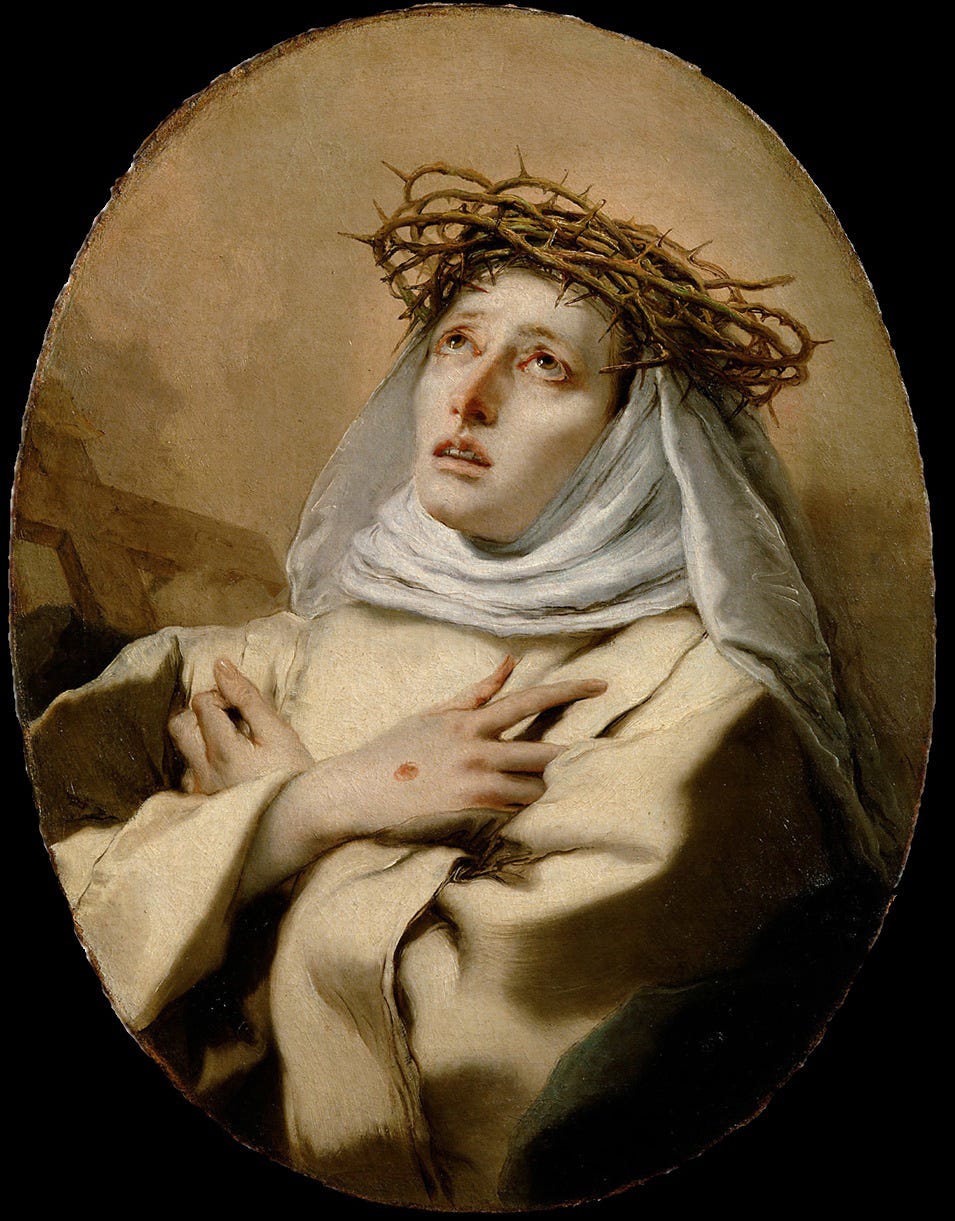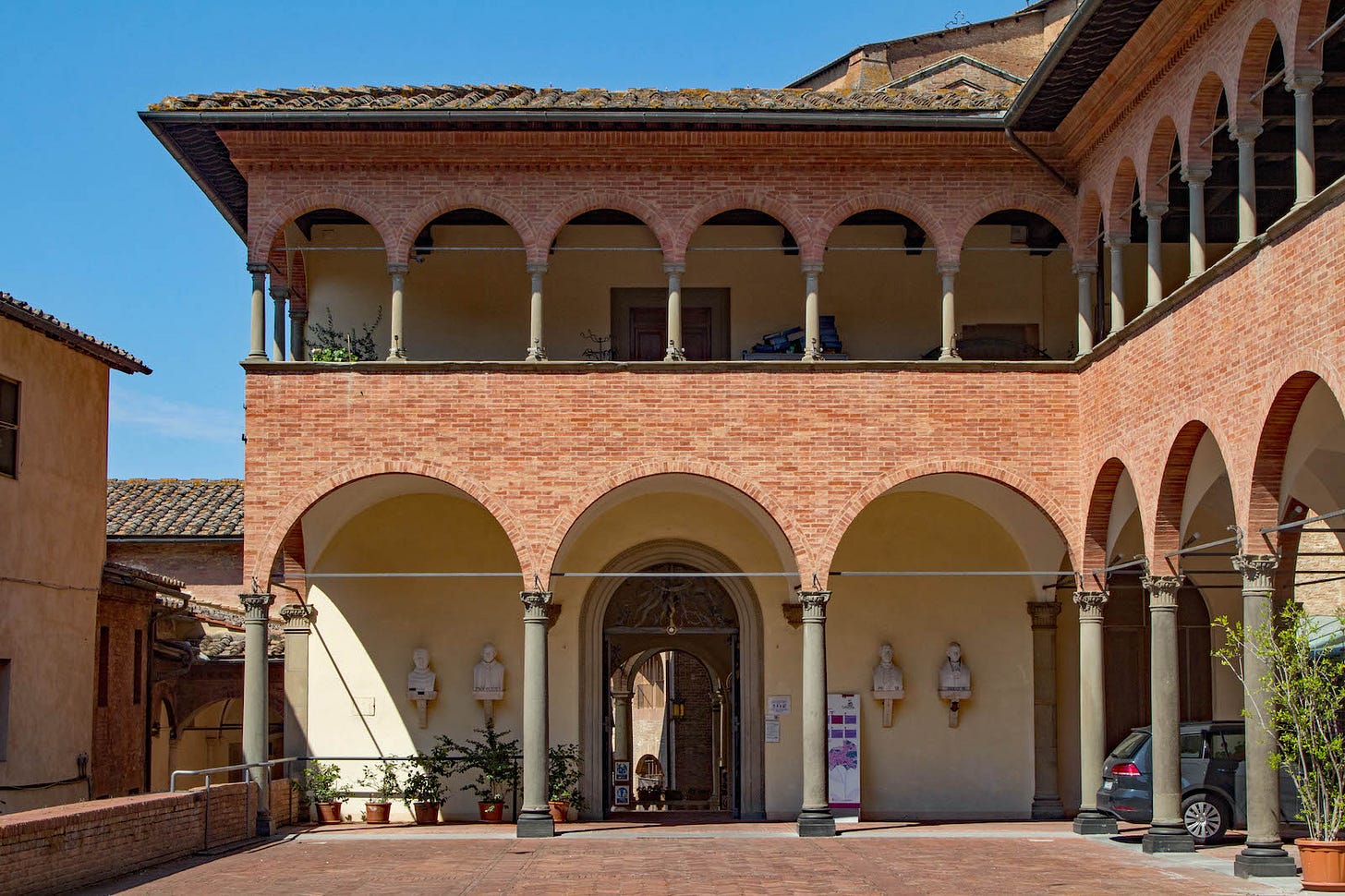The Patron Saint of Faith & Power
It is said that 'power corrupts'. But Catherine of Siena showed that you can change the world without selling your soul...
“Hell cannot stand before the virtue of humility…”
Saint Catherine of Siena, Letter to Raymond of Capua
A great deal of the ‘charm’ that accompanies the stories of Christian saints often lies in their apparent ‘escapism’. That is, their lives and deeds appear so timeless — fairytale-like, even — that to anchor them in history almost seems a crude intrusion into the magic of their stories.
But Saint Catherine of Siena was different, for she was no mere bystander to our history. Indeed, she played a major role in shaping it.
She negotiated with governments, foiled alliances, and narrowly escaped assassination. Without her, Pope Gregory XI might never have returned to Rome in 1377, and the Papacy might have departed Italy forever.
Yet despite her presence at the very heart of the grandest political movements of her age, she was the very image of Christian charity, of selflessness, of devotion, and of otherworldliness. Not for nothing is Saint Catherine a Doctor of the Church, and a patron saint of both Italy and Europe.
How, therefore, is it possible to engage with power while retaining holiness? Today, we consider how Catherine of Siena showed that one can enter the political arena at the highest level — and emerge not only uncontroversial, but unanimously revered…
Siena’s Darkest Hour

Even the birth of Caterina di Benincasa was in and of itself a glimmer of beauty and hope. For when she first opened her eyes, on the 25th March 1347, she did so on the eve of her country’s gravest hour.
Her father Jacopo di Benincasa was a respected artisan in Siena, engaged in the manufacture of dyes for wool, and of not insignificant wealth. Her mother, Lapa di Puccio Piagenti, was the daughter of a poet, and of the hardiest stock. Catherine, after all, was the twenty fourth of her twenty five children, born alongside a twin, Giovanna.
Within days, however, Giovanna’s death would be a terrible portent of the cataclysm that was about to be unleashed upon Siena. For it was that in the April of 1348 that galleys from the Genoese port of Kaffa in the Crimea docked at Pisa. Less than a week later, their shipment from the east reached Siena — tragically, so too did microscopic stowaways.
What followed was a summer of indescribable horror, as the Black Death was unleashed upon a city that had been at the height of her glory. Catherine, a mere baby, was mercifully spared the worst of the memories of this pestilence, but not those of its consequences. Providence would spare her parents from the plague, but by autumn, barely a third of Siena’s people still lived, and the civilisational collapse the massacre induced would permanently rip the city’s destiny from her.
Amid the trauma of the survivors, and grief of the city over the years which followed, it must surely have been a heartwarming distraction to see that bright little Benincasa girl who dwelled near San Domenico, baptised ‘Caterina’ yet nicknamed Euphrosyne by her parents — the Greek word for joy — for her jovial and jubilant nature…
The Vision of Heaven
Catherine was indeed just six years old when that joy germinated. One day, returning home with her brother Stefano, she suddenly halted, her eyes fixed on the all powerful vision that manifested before her eyes.
Christ, clad in the vestments and tiara of the Papacy, sat enthroned, Saints Peter, Paul and John at his sides. Her eyes wide with shock and devotion, she gazed in wonder at the Saviour, who smiled gently and with incomparable majesty.
Stefano, noticing his sister was not by his side, turned and saw her, immobilised with awe. “Come on, why do you stay there?” he ventured, oblivious to what had happened. It was then, as her later confessor the Blessed Raymond of Capua would recount, that Catherine heard her calling, and the course of her life determined:
Keep reading with a 7-day free trial
Subscribe to INVICTUS to keep reading this post and get 7 days of free access to the full post archives.



